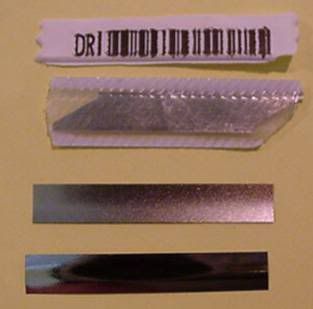The other day, when my friend and I were walking past a departmental shop, a DVD we had with us triggered the shop's anti-shoplifting system. The security guard came over and helped us figure out that the trigger belonged to a plastic strip attached to the DVD casing which looked like this:

Of course, ordinarily, removing it and throwing it away would be what most people would have done. But, I'm not quite the ordinary person =p
Curious about why such a small strip of metal could prevent theft and transmit signals to trigger an alarm, I decided to take it apart.
It was rather disappointing to see that besides housing a few strips of metal, there really wasn't any circuits or wires jutting out of that thing. So how does it work?
Here's a summary of what
this site says:
Basically, the strip has a magnetic, iron-containing wire or ribbon inside that has a high
permeability that makes it easy for magnetic signal to flow through it. To deactivate this ribbon, you simply use a weak magnet to saturate the tag and this puts it in an inactive saturated state. The active state is the state at which the strip will trigger the alarm.
How does the system work?
At the gate of the shop, there is an intensive low frequency magnetic field generated by the transmitter antenna (those 'gate'-like things you see near the door). When the active strip passes through, it transmit a unique frequency pattern which is picked up by an adjacent receiver antenna. The signal is processed and if it is recognised, an alarm will be triggered!
Because of it's low frequency, it can be placed on other metal objects and these metal objects will not trigger the alarm because their permeability is just not high enough.
p.s. sorry if this trivia contained too much scientific terms... If anyone needs a layman explanation, you could drop me a comment and i'll try to work on a layman explanation. =)

